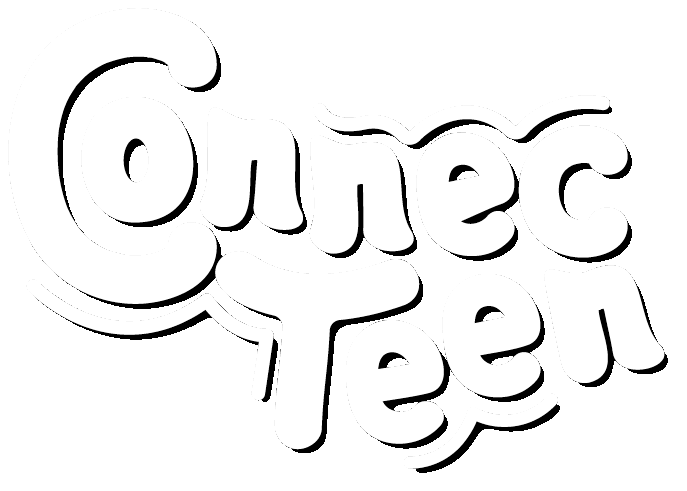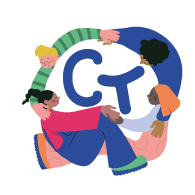Goal: Practicing being present in the moment helps teenagers develop a stronger sense of self-awareness—the ability to notice what they are thinking, feeling, and experiencing without judgment.
In today’s fast-paced world, teens are often pulled in many directions by school, social media, and outside pressures. Learning to slow down and focus on the here and now helps them:
- Recognize their emotions and needs more clearly
- Respond to situations with intention rather than reaction
- Reduce stress, anxiety, and overwhelm
- Strengthen concentration and decision-making
- Build more meaningful relationships
Being present is a powerful tool that supports mental well-being and personal growth. For teenagers, it lays the foundation for emotional resilience, self-confidence, and a more grounded sense of identity.

Equipment list for session 6:
- PC with Power Point
- Projector/TV to show Power Point
Wellcome – Time: 5 min
Trainers will say to the group:
Last session, you explored how just one powerful word can change a conversation and the way you connect with others. What is something you remember from last session or want to share about your home assignment? Today, the focus is on Physical Well-being—and how being present in your body and in the moment can help you build self-awareness, lower stress, and face life with more clarity, confidence, and calm.
Part 1: Brainstorming Physical wellbeing – Time: 10 min

Brainstorming 1:
Physical well-being. Let the students contribute to the brainstorming of how they understand physical health — whether they play sports, go for walks, eat healthily, get enough sleep, etc.
Information to the trainers: Theyhave done this many times and you can push them to contribute before you add something.
Brainstorming 2: Find a new flipchart. Ask the students the following question: What are your main distractions in life? Write the answers on the new flipchart.
After finishing say: One way to keep distractions away is to focus on your breathing.
Part 2– Exercise Box Breathing – Time: 15 min
Purpose: To give the participant an exercise they can easily do on their own that can help with reducing stress and anxiety.
- Slow, deep breathing activates the parasympathetic nervous system (the “rest and digest” mode), which lowers stress and anxiety. When stress hormones like cortisol decrease, the brain is better able to stay calm and attentive.
- Improves Oxygen Supply to the Brain. Focus requires steady energy. Proper breathing increases oxygen and carbon dioxide balance, ensuring the brain gets the fuel it needs. Better oxygenation = improved alertness, clarity, and sustained concentration.
- Enhances Mind-Body Awareness. Conscious breathing pulls attention back to the present moment. This reduces mind-wandering and distractions, training the brain to stay with the task at hand.
- Balances Energy and Arousal Levels Certain techniques (like slow diaphragmatic breathing) calm the mind, while others (like quick “bellows breath”) boost alertness. This flexibility helps you match your energy state to what’s needed for focus.
- Strengthens Prefrontal Cortex Function The prefrontal cortex controls decision-making, attention, and working memory. Studies show that breathing practices improve executive functions, making it easier to plan, focus, and resist distractions.
Trainers: Tell the students the reason for doing this and the benefits it can have. Say:
- Deep breathing is a powerful tool to manage stress, calm anxious thoughts, and alleviate feelings of anxiety and depression.
- Regular practice can lead to a lower heart rate and stable blood pressure. Increased oxygen supply to the brain and body can boost energy levels and improve concentration

- Trainers: What you will do is called Box breathing.
- Trainers: Tell the students to get comfortable in their seats. Pause for a few seconds before saying; Now you can close your eyes and follow the breathing instructions we are giving you.
- Trainers: Now Inhale for 4 seconds, then hold for 4s. You as trainer will count out loud for them, slowly.
- Trainers: Now exhale for 4 seconds, then hold for 4seconds.
REPEAT THIS SEQUENCE 5 times! - Trainers: What do you notice? Was it hard? What was hard about it? Was it easy? What was easy? Trainers: You will do this one more time and notice how it is different now that it is the second time.
- Trainers: Tell the students to get comfortable in their seats. Pause for a few seconds before saying; Now you can close your eyes and follow the breathing instructions we are giving you.
- Trainers: Now Inhale for 4 seconds, then hold for 4s. You as trainer will count out loud for them, slowly.
- Trainers: Now exhale for 4 seconds, then hold for 4seconds.
REPEAT THIS SEQUENCE 6 times!
Closure/Summary– Time: 3 min
Breathing techniques improve focus and concentration because they calm the mind, regulate energy, and supply the brain with the oxygen it needs to stay clear and attentive.

Home assignment– Time: 10 min
Introduction for the students: Purpose of a home assignment is that if you want something new in your life, you have to do something new. When you take action between each session, change will happen.
Assignment: Do this exercise on your own once per day until we meet again. Check in with the group that they have understood the exercise.
Acknowledge the class/students–Time: 2 min
Find something from today’s session you can acknowledge before you say goodbye. d something from today’s session you can acknowledge before you say goodbye.
